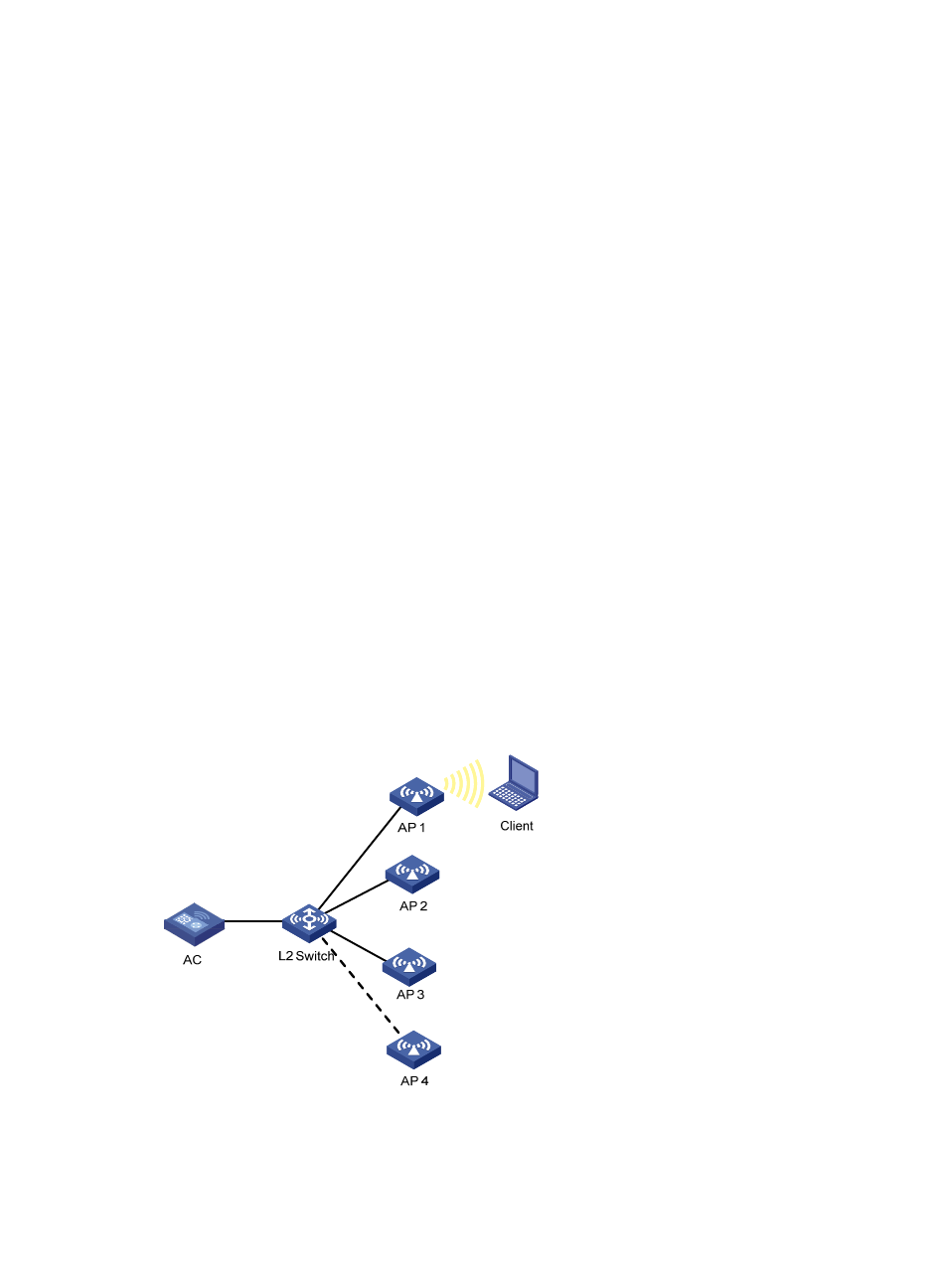Verifying the configuration, Configuring a radio group, Network requirements – H3C Technologies H3C WX3000E Series Wireless Switches User Manual
Page 138

126
# Specify the maximum number of neighbors, the power adjustment threshold, and the calibration
interval.
[AC-wlan-rrm] dot11bg adjacency-factor 3
[AC-wlan-rrm] dot11bg calibrate-power threshold 65
[AC-wlan-rrm] dot11bg calibrate-power min 1
Verifying the configuration
When AP4 joins, the number of neighbors reaches 3. Assume the signal strength of AP 4 is the third
among all neighbors (AP 2, AP 3, and AP 4). AP 4 thus becomes the neighbor AP that perform power
detection.. If AP 4 detects that the power of AP 1 is –90 dBm, which is lower than the power adjustment
threshold –80 dBm, AP 1 will increase its transmission power. If AP 4 detects that the power of AP 1 is
–70 dBm, which is higher than the power adjustment threshold –80 dBm, AP 1 will decrease its
transmission power. You can use the display wlan ap { all | name apname } rrm-status command to
check the adjusted power (TxPower).
The adjusted power of AP 1 cannot be lower than the minimum transmission power (1 dBm in this
example).
Configuring a radio group
Network requirements
As shown in
, AP 1 through AP 3 are connected to the AC.
•
Configure auto DFS so that the AC can automatically switch the working channel of an AP when the
signal quality on that channel is degraded to a certain level.
•
Configure auto TPC so that the AC can automatically adjust the power of an AP when the third
neighbor of that AP is discovered (or in other words, when AP 4 joins).
•
Add radio 1 of AP 1 and radio 1 of AP 2 to a radio group to prevent frequent channel and power
adjustments.
Figure 66 Network diagram
Verifying the configuration
# Create a WLAN ESS interface.
- H3C WX5500E Series Access Controllers H3C WX3500E Series Access Controllers H3C WX2500E Series Access Controllers H3C WX6000 Series Access Controllers H3C WX5000 Series Access Controllers H3C WX3000 Series Unified Switches H3C LSWM1WCM10 Access Controller Module H3C LSUM3WCMD0 Access Controller Module H3C LSUM1WCME0 Access Controller Module H3C LSWM1WCM20 Access Controller Module H3C LSQM1WCMB0 Access Controller Module H3C LSRM1WCM2A1 Access Controller Module H3C LSBM1WCM2A0 Access Controller Module H3C WA3600 Series Access Points H3C WA2600 Series WLAN Access Points
